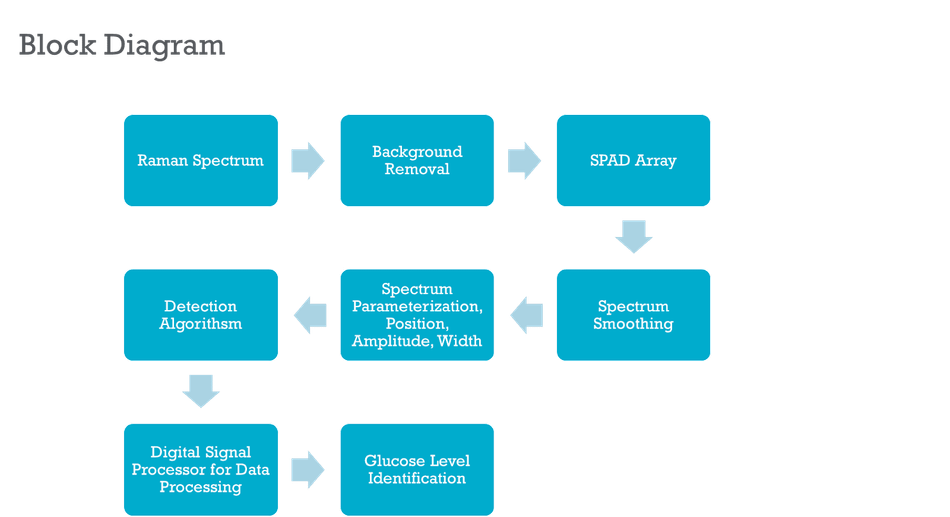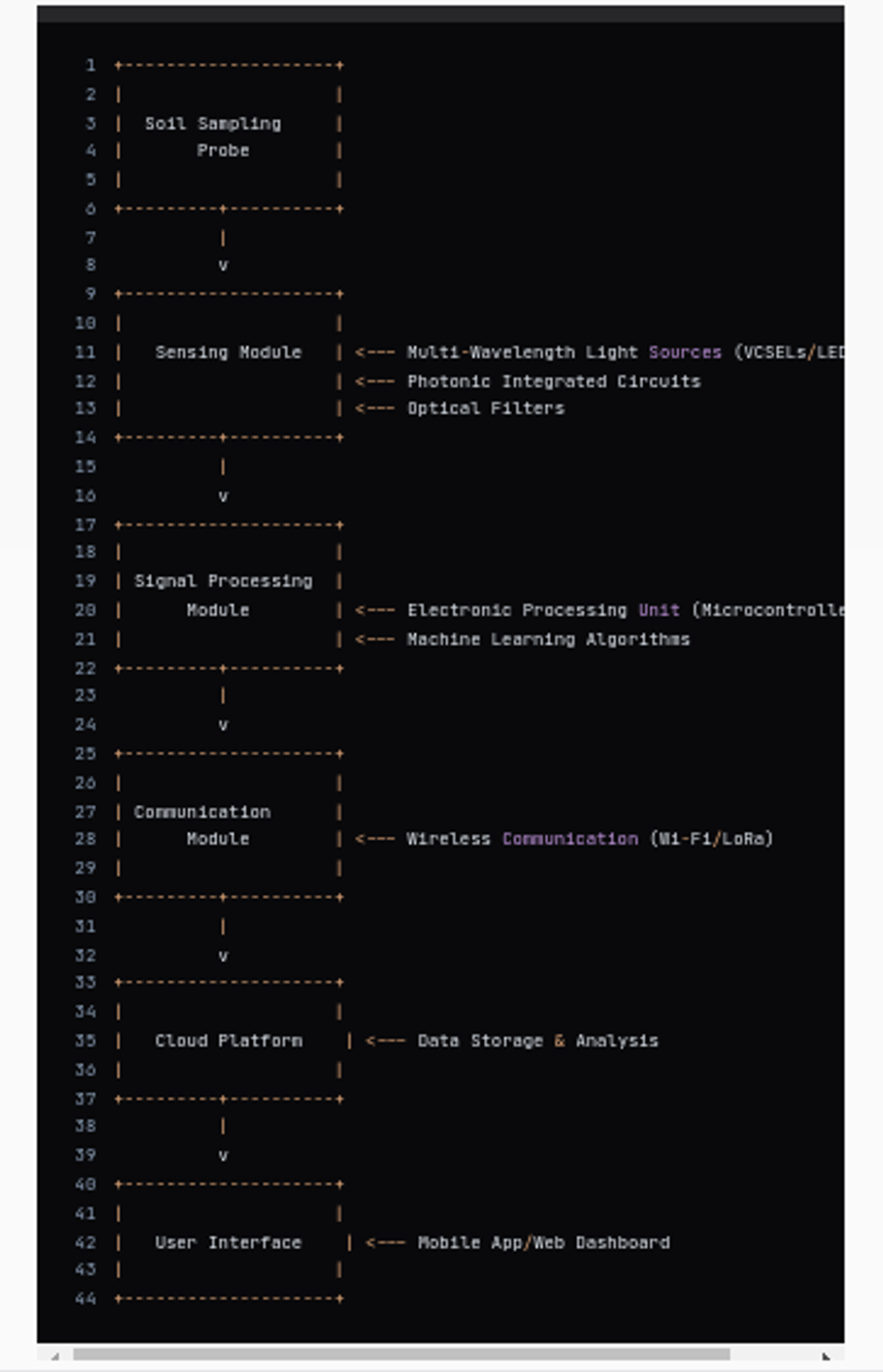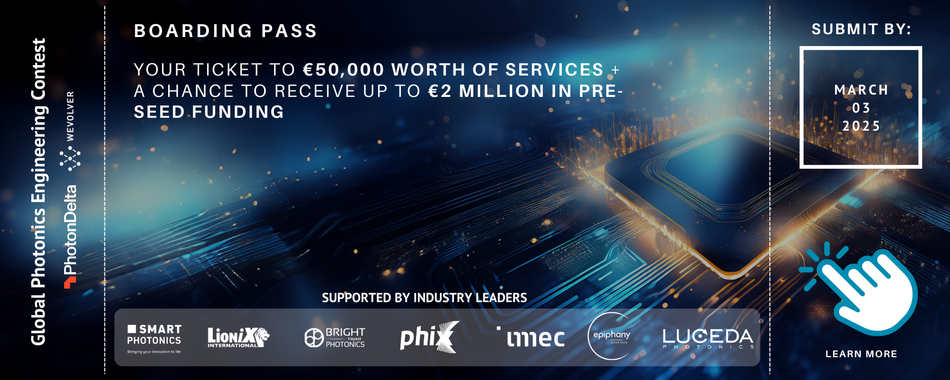Global Photonics Engineering Contest: Highlighting Innovations and the Race to the Deadline
The future is being built with light, and engineers around the world are leading the change.
With less than one month left before the submission deadline, the Global Photonics Engineering Contest hosted on Wevolver, by PhotonDelta, is showcasing promising innovations in photonic integrated circuits (PICs)—a technology revolutionizing industries from healthcare to artificial intelligence.
This contest isn't just about competition—it's about impact. As industries face mounting challenges, from energy consumption to food security, integrated photonics is emerging as a game-changing solution. In this article, we explore some of the most promising entries from the challenge, examine how they align with broader industry trends, and highlight why now is the time for engineers to push the boundaries of what’s possible with light.
Global Photonics Engineering Contest
- Prize: €50,000 worth of services from the PhotonDelta ecosystem to make your idea market-ready + a chance to receive up to €2 million in pre-seed funding.
Audience: Open to all engineers, researchers, OEMs, hardware manufacturers, startups/scale-ups, research teams, and students working on innovative PIC applications.
- Bonus: All participants will receive free 3-month access to Luceda IPKISS software, along with access to Luceda's tools and support channel.
End date: March 3rd 2025
The Global Photonics Challenge: Spotlight on Pioneering Submissions
As industries rush to adopt faster, more energy-efficient technologies, integrated photonics is proving to be the key. Some of this contest’s entries are tackling major global challenges, from chronic disease management to AI’s growing computational demands. Below, we highlight three standout projects, diving into how they’re leveraging integrated photonics and why this matters for their respective industries.
InnoPIC: Non-Invasive Glucose Monitoring with Raman Spectroscopy and SPAD Arrays
Industry: Healthcare & Medical Devices
Team Lead: Omer Cheema (Eindhoven, Netherlands)
The Challenge:
Diabetes affects over 540 million people worldwide, yet traditional glucose monitoring methods are invasive, costly, and sometimes inaccurate. Current continuous glucose monitoring (CGM) systems rely on subcutaneous sensors that require frequent replacements, making them inaccessible for many.
The Innovation:
InnoPIC’s wearable device combines Raman spectroscopy—a powerful molecular analysis tool—with single-photon avalanche diodes (SPADs) to amplify weak optical signals. A proprietary AI-driven noise-filtering algorithm ensures precise, pain-free glucose monitoring in real-time.
Technical Edge:
SPAD Arrays: Enhance Raman signal sensitivity to detect glucose at the molecular level.
Noise Reduction: Hybrid electronic-photonic filtering minimizes environmental interference.
AI Integration: Adjusts for individual skin composition differences.
Why Photonics Matters in Healthcare
The healthcare industry is experiencing a transformation thanks to advancements in photonics, which facilitate low-cost, non-invasive diagnostics. Light-based technologies, ranging from wearable biosensors to portable medical imaging devices, are enhancing access to healthcare while reducing the dependence on expensive hospital equipment. If successful, InnoPIC could eliminate painful finger-prick tests and greatly enhance diabetes management for millions of people.
NeuroCore: Photonic Neural Network Accelerators for AI
Industry: Artificial Intelligence & High-Performance Computing
Team Lead: Marc Soss (California, USA)
The Challenge:
AI models are growing at an exponential rate, requiring trillions of multiply-accumulate (MAC) operations. Today’s GPUs and TPUs consume massive amounts of energy, with data centers accounting for ~1.5% of global electricity use—a number that’s rapidly rising.
The Innovation:
NeuroCore replaces power-hungry electronic transistors with optical components, enabling energy-efficient AI computing. Mach-Zehnder interferometers (MZIs) and waveguides perform matrix multiplications using light, drastically reducing power consumption while increasing computational speed.
Technical Edge:
Interference-Based Computing: Optical phase modulation accelerates AI workloads.
Thermal Management: PICs generate far less heat than silicon-based alternatives.
Scalability: Integration with existing CMOS fabrication processes.
Why Photonics Matters in AI
With AI workloads skyrocketing, energy efficiency is the biggest bottleneck. Photonic computing could be the breakthrough the industry needs, offering high-speed, low-power alternatives to traditional electronics. Whether it’s autonomous vehicles, real-time medical imaging, or AI-driven research, NeuroCore’s technology has the potential to reshape the future of computing.
IPSA: Integrated Photonic Smart Soil Analyzer
Industry: Agriculture & Environmental Sustainability
Team Lead: Jatinkumar Parmar (Surat, India)
The Challenge:
By 2050, global food production must increase by 70% to sustain a growing population. However, over-fertilization and soil degradation already cost farmers $400 billion annually, damaging ecosystems and reducing yields.
The Innovation:
IPSA is a real-time soil analysis device that uses multi-wavelength spectroscopy (NIR/MIR) to assess soil health. Integrated waveguides and spectral filters isolate nutrient signatures, while machine learning algorithms provide actionable insights for irrigation and fertilization.
Technical Edge:
Multi-Parameter Sensing: Simultaneously measures NPK levels, pH, moisture, and contaminants.
Energy Efficiency: Solar-powered, making it ideal for off-grid deployment.
IoT Integration: Wireless connectivity supports precision agriculture at scale.
Why Photonics Matters in Agriculture
Photonics is radically improving agriculture by enabling smart farming techniques. Optical sensors are helping reduce fertilizer waste, optimize irrigation, and enhance crop health, making food production more sustainable. IPSA’s technology could help reduce chemical runoff, conserve water, and improve yields—offering a vital solution for global food security.
Final Countdown: Less than One Month Left to Submit
The deadline is approaching fast. To participate:
- Review the Guidelines: Ensure your project meets the technical and industry criteria.
- Highlight Innovation: Show how your design advances the current state of the art.
- Demonstrate Impact: Quantify potential benefits—energy saved, costs reduced, lives improved.
Submissions will be evaluated by a panel of photonics experts, with winners receiving editorial coverage on Wevolver and opportunities to connect with industry leaders.
- Prize: €50,000 worth of services from the PhotonDelta ecosystem to make your idea market-ready + a chance to receive up to €2 million in pre-seed funding.
Audience: Open to all engineers, researchers, OEMs, hardware manufacturers, startups/scale-ups, research teams, and students working on innovative PIC applications.
- Bonus: All participants will receive free 3-month access to Luceda IPKISS software, along with access to Luceda's tools and support channel.
End date: March 3rd 2025





